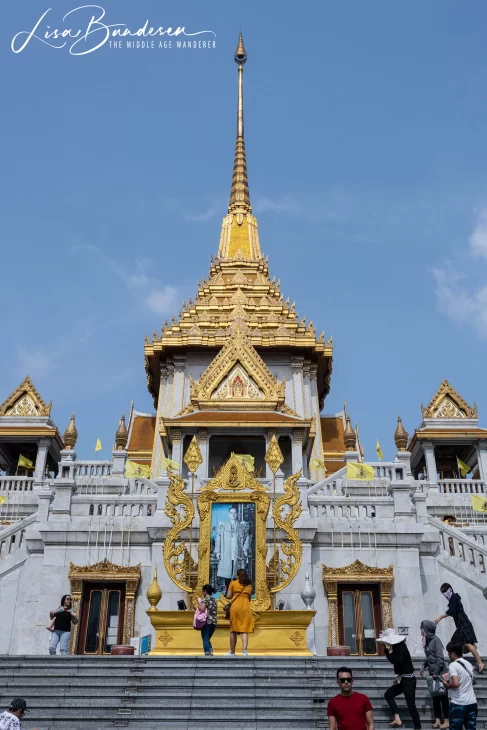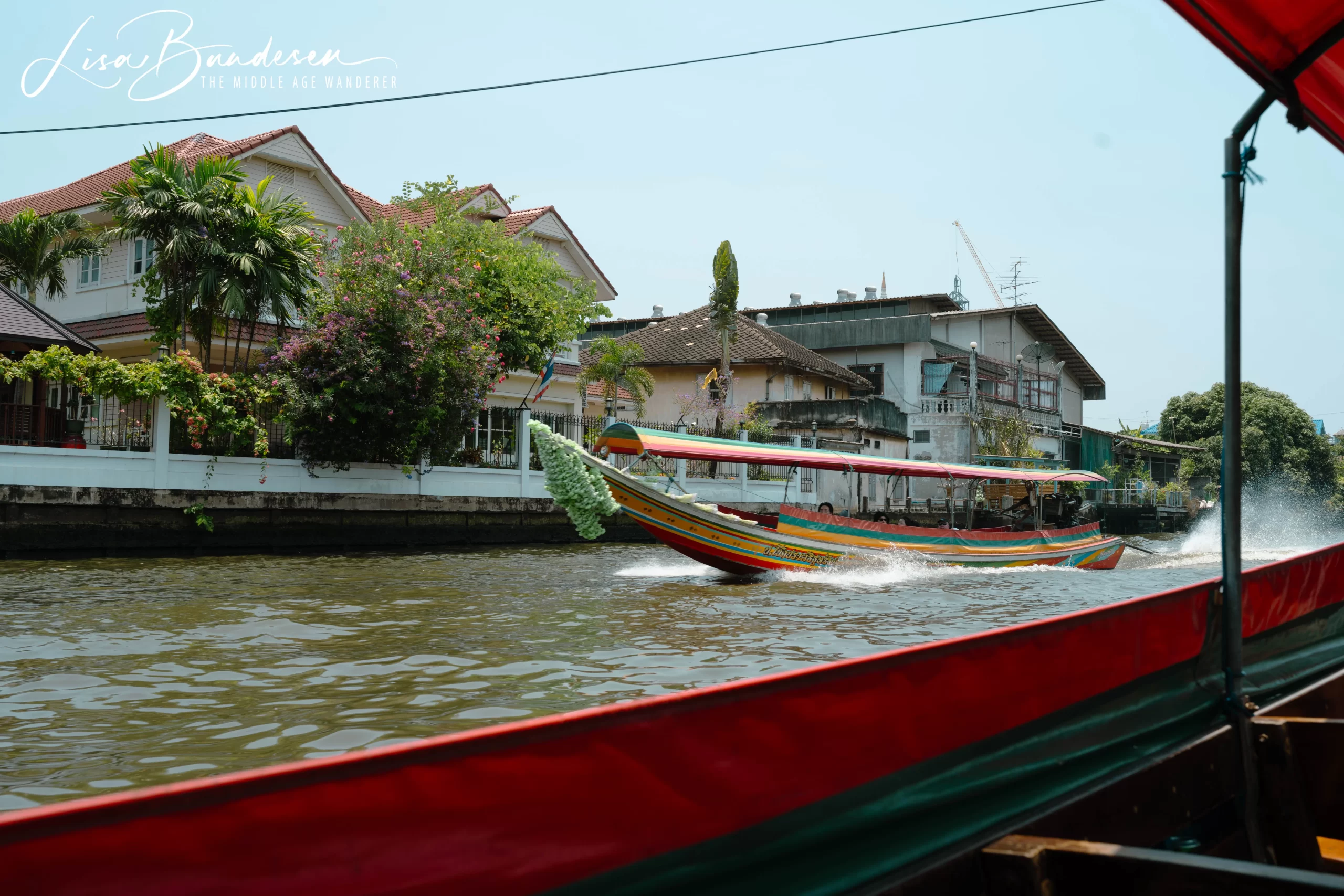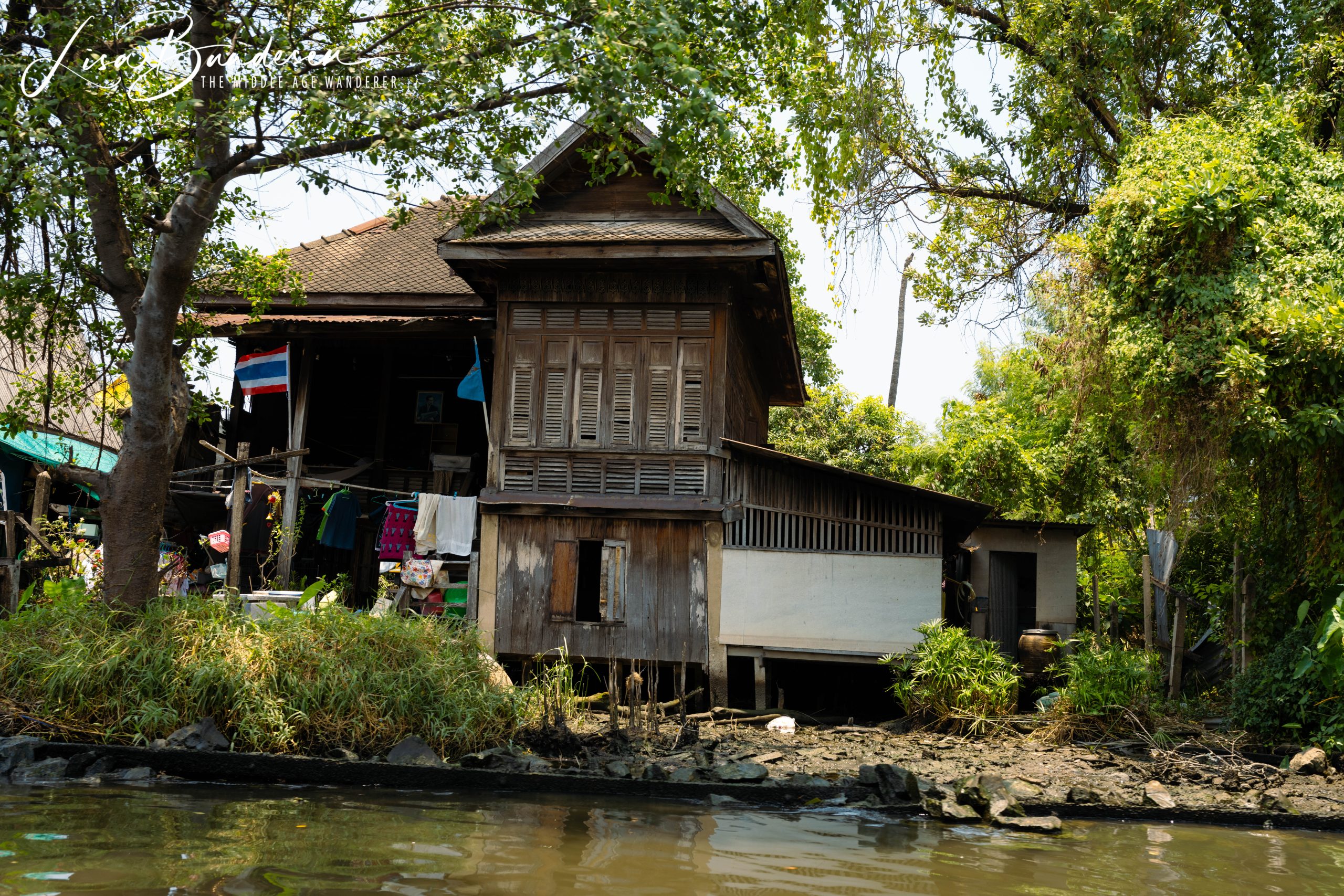
Maagiri Hotel Review
Discover the Maagiri Hotel in Male, Maldives. Ideal for leisure and business travellers – ocean views, restaurant dining and great service.


Bangkok offers an intoxicating mix of ancient culture, bustling street life, and modern luxuries. Here are ten must-do activities in Bangkok, each providing a unique experience and insight into the city’s rich history and vibrant culture.
The Grand Palace and the Temple of the Emerald Buddha (Wat Phra Kaew) symbolise Thailand’s rich cultural and historical heritage. Located in the heart of Bangkok, these splendid landmarks offer a glimpse into the country’s royal past and religious devotion.
The Grand Palace has been the ceremonial and administrative seat of the Thai monarchy since its construction in 1782. The palace complex is a stunning showcase of intricate architecture and craftsmanship. Its layout comprises numerous buildings, halls, and pavilions around open lawns, gardens, and courtyards. Each structure is adorned with elaborate details, colourful tiles, and glittering decorations, reflecting the grandeur of Thai royalty.


Adjacent to the Grand Palace is the Temple of the Emerald Buddha, Thailand’s most sacred Buddhist temple. Unlike other statues made of jade or metals, the Emerald Buddha is carved from a single block of jade. Remarkably, it’s not the size but the deep religious significance that draws the attention of locals and tourists. The temple and the palace are popular tourist spots and pivotal to understanding Thai culture’s spiritual and royal essence.
However, anyone planning to visit should remember to dress respectfully, as these are sacred sites. Covering shoulders and knees is required to show respect and to be allowed entry into the complex.


Wat Pho, also known as the Temple of the Reclining Buddha, is one of Bangkok’s most famous and historically significant temples. Situated just south of the Grand Palace, this temple is renowned for its giant reclining Buddha and as a centre of traditional Thai massage.
The highlight of Wat Pho is the Reclining Buddha. The statue is enormous. It is 46 meters long and 15 meters high, covered in gold leaf, giving it a serene and majestic appearance. The Buddha’s feet alone are 3 meters high. They are inlaid with mother-of-pearl illustrations of the auspicious ‘laksanas’ (characteristics) of the Buddha. This statue represents the Buddha in his final moments on earth, entering the state of Nirvana, which is the release from the cycle of death and rebirth.
Beyond the Reclining Buddha, Wat Pho offers much more. The temple complex is one of the largest and oldest in Bangkok, sprawling over 80,000 square meters. It features many beautifully decorated stupas, halls, and other Buddha images. The intricate murals and sculptures found throughout the temple depict various scenes from Thai culture and the Jataka tales, which are stories about the previous lives of the Buddha.
Wat Pho is also considered the leading school of massage in Thailand, making it a pioneer in the traditional Thai medicine and massage practice. Visitors can observe this ancient art and enjoy a relaxing massage experience from skilled practitioners.
This temple is not just a tourist attraction but a place of learning and spiritual reflection. It offers a peaceful retreat from Bangkok’s bustling city life. Visitors are advised to dress modestly and respectfully, as Wat Pho is a revered religious site. Exploring Wat Pho provides a deeper understanding of Thai Buddhist culture and its lasting legacy of wellness and spiritual practices.

Wat Traimit, located in Bangkok’s bustling Chinatown district, is home to the world’s largest solid gold Buddha image, the Golden Buddha. This remarkable statue draws visitors not only because of its size and beauty but also because of its fascinating history.
The Golden Buddha stands about 3 meters tall and weighs a hefty 5.5 tons. Crafted from pure gold, the statue is estimated to be worth hundreds of millions of dollars. The Buddha is depicted in a seated position, with a calm expression and a pose that symbolises peace and detachment from worldly troubles.
The history of the Golden Buddha is as dramatic as it is mysterious. For centuries, the statue was covered in stucco and coloured glass to disguise its actual value. This protected it from thieves and invaders during war and turmoil. The Buddha’s true nature was only discovered by accident in the 1950s when the statue was being moved to a new location. The stucco coating cracked during the move, revealing the gleaming gold underneath.
Wat Traimit is a beautifully designed temple that reflects Thai and Chinese architectural styles. It celebrates the diverse community of Chinatown. The temple complex includes a museum that provides insights into the history of the Golden Buddha and the Chinese heritage in Bangkok.
Visiting Wat Traimit offers more than just a view of a gold statue; it provides a lesson in history, art, and Bangkok’s cultural melting pot.


Exploring Bangkok’s extensive network of waterways by long boat offers a captivating insight into a unique aspect of the city’s charm and history. Known locally as “klongs,” these canals are vital to local life and provide a quieter, slower pace than the bustling city streets.
Taking a long boat ride through these klongs, you’ll experience a side of Bangkok that tourists seldom see. The journey reveals a mix of old and new Bangkok, where traditional wooden stilt houses perch alongside modern buildings. You’ll spot locals doing daily tasks, children playing by the water, and boat vendors selling fruits, vegetables, and meals.
The waterways are not just for sightseeing; they are an active part of the community’s lifestyle. They serve as important transportation routes for locals who commute daily by boat to work or school. This method of transport provides a glimpse into the traditional way of life that has sustained residents for generations.
A long boat ride through Bangkok’s waterways is more than just a tour; it’s an adventure that offers a deeper understanding of the city’s communities.


Asiatique The Riverfront in Bangkok is a vibrant and trendy night market that combines shopping, dining, and entertainment along the scenic Chao Phraya River. This market stands out because it blends the city’s rich history with a modern shopping experience.
Opened in 2012, Asiatique occupies the former docks of the East Asiatic Company, a significant trading company in the early 1900s. The developers preserved several original structures, giving the market a unique, historical charm. Today, it features over 1,500 boutiques and 40 restaurants housed in giant renovated warehouses, offering everything from traditional Thai products to international brands.
Shopping at Asiatique is a significant draw. Stalls sell various goods, such as clothes, accessories, handicrafts, and home decor. Whether you’re looking for a souvenir or something trendy, you’ll find it here.
For food enthusiasts, Asiatique does not disappoint. The market has a wide selection of eateries, from street food stalls offering quick bites to upscale restaurants serving gourmet dishes. You can enjoy traditional Thai food, seafood, or international cuisine—all while taking in views of the river.
Entertainment is another feature of Asiatique. The market hosts performances ranging from traditional Thai puppet shows to live music and a large Ferris wheel called the Asiatique Sky. This Ferris wheel offers stunning city skyline views, especially at night.
Asiatique is easily accessible by taking a free shuttle boat from the Saphan Taksin BTS station. This will add an enjoyable ride on the river to your visit. The market is open from late afternoon until midnight, making it perfect for an evening out.


Bangkok’s floating markets are a captivating city feature, offering a colourful and lively glimpse into traditional Thai life. These markets, set on the city’s numerous canals and rivers, are bustling with small wooden boats loaded with fresh produce, handmade crafts, and ready-to-eat meals.
One of the most famous floating markets is Damnoen Saduak. Although it’s a drive from Bangkok, it’s known for its vibrant atmosphere and photogenic scenes. Here, vendors in straw hats paddle their boats, selling everything from tropical fruits and vegetables to spicy noodles and sweet treats. The lively calls of the vendors, the splash of oars in the water, and the vivid array of goods create a vibrant sensory experience.
Another notable floating market is Amphawa. This market is popular among locals and offers a more authentic experience. Amphawa comes alive in the late afternoon and is famous for its seafood. Visitors can enjoy freshly grilled prawns, squid, and fish cooked on the boats and served piping hot. This market also has quaint wooden houses lining the waterways, adding to its rustic charm.
For those who prefer a quieter experience, Taling Chan Market, located just outside Bangkok, provides a laid-back atmosphere. It’s smaller and less touristy, allowing for a more relaxed shopping and dining experience. Here, you can leisurely browse the goods, listen to live music, and savour local dishes without the larger crowds.
Floating markets are not only places to shop and eat; they are also rich in cultural significance. They reflect the traditional Thai way of life around waterways, vital for transport and trade. Visiting these markets offers a unique way to see and experience the local culture and lifestyle, making them a must-visit for anyone wanting to see the authentic side of Bangkok.


Vertigo Restaurant and Moon Bar are perched atop the Banyan Tree Hotel in Bangkok. Situated 61 floors above the bustling streets, this rooftop venue is known for its luxurious setting and panoramic views of Bangkok.
To reach Vertigo and Moon Bar, visitors must ascend a flight of stairs on the outside of the building. This open-air climb, with a glass barrier, is an exhilarating start to the evening for many, but it may be daunting for those with a fear of heights. My fear of heights definitely kicked in. But once at the top, the reward is a stunning 360-degree view of Bangkok’s skyline, especially mesmerising at sunset and into the evening as the city lights come to life.
The restaurant Vertigo offers a fine dining experience. Its menu features international dishes, including premium steaks and fresh seafood, all expertly prepared and presented.
Adjacent to Vertigo is the Moon Bar, famous for its innovative cocktails and an extensive list of wines and spirits. The bar area provides a relaxed environment where guests can sip their drinks under the starry sky. The sleek and modern design of the bar allows guests to relax and soak in the surroundings.
While the ascent might be a bit challenging for those uneasy with heights, the staff are accommodating, and the experience is well worth it. For anyone looking for a memorable dining or nightlife experience in Bangkok, Vertigo Restaurant and Moon Bar offer a unique blend of luxury, comfort, and stunning vistas that are hard to match. It’s a perfect spot to celebrate special occasions or enjoy an evening out.



Bangkok’s Chinatown, known as Yaowarat, is a vibrant and bustling area that serves as a cultural and culinary hub in the city’s heart. Established in the 1780s, it is one of the oldest Chinatowns in the world. It remains a vital part of Bangkok’s heritage and daily life.
Yaowarat Road, the main thoroughfare of Chinatown, is lined with an array of shops, market stalls, and food vendors. During the day, the streets are a hive of activity, with locals and tourists exploring the gold shops, traditional medicine stores, and countless vendors selling everything from Chinese herbs to household items. The area is renowned for its gold trade, with numerous shops displaying intricate jewellery designs.
As the sun sets, Chinatown truly comes to life. The street food scene here is legendary, offering some of the best culinary experiences in Bangkok. Food stalls and open-air restaurants fill the sidewalks, serving an array of dishes that reflect the rich culinary traditions of the Chinese community.
For anyone visiting Bangkok, Chinatown offers an immersive experience of the fusion of Thai and Chinese cultures. Its narrow alleys and bustling streets provide a sensory overload of sights, sounds, and smells.


Wat Arun, known as the Temple of Dawn, is one of Bangkok’s most stunning and iconic landmarks. Located on the west bank of the Chao Phraya River, this magnificent temple is best known for its 70-meter-high towering spire (prang), which is intricately decorated with tiny pieces of coloured glass and Chinese porcelain.
Visiting Wat Arun offers a fascinating glimpse into Buddhist architecture and religious practices. The central spire symbolises Mount Meru, the centre of the universe in Buddhist cosmology. It is surrounded by four smaller spires, which represent the four continents. The intricate design and craftsmanship in its decoration are genuinely awe-inspiring.
The best time to visit Wat Arun is early morning, as the first light of dawn reflects off the surface of the temple with a pearly iridescence. However, the temple is also striking at sunset and into the evening when lit up, creating a breathtaking sight against the night sky.
Getting to Wat Arun is an adventure in itself. The most scenic route is to take a boat across the river from Tha Tien Pier, near the Grand Palace and Wat Pho. This short boat ride adds to the experience and offers a fantastic view of the temple from the water.
Once there, visitors can climb the central prang to access a viewing platform, which offers panoramic views of the surrounding city and river. Note, however, that the steps are pretty steep and narrow, which can be a challenge for some.


Taking a river cruise in Bangkok is a fantastic way to experience the city from a different perspective. The Chao Phraya River, often called the “River of Kings,” is the main waterway cutting through Bangkok. It is a lifeline that has shaped the city’s history and development. A cruise along this river offers a serene escape from the bustling city streets. It provides a unique view of many of Bangkok’s most famous landmarks.
River cruises in Bangkok vary widely, from luxurious dinner cruises to simple boat tours. Most cruises offer a guided commentary that shares insights about the city’s history and the landmarks you pass by. These might include the majestic Grand Palace, the iconic Wat Arun (Temple of Dawn), and the modern skyscrapers that now define much of the city’s skyline.
Dinner cruises are popular. They combine delicious Thai cuisine with the romantic backdrop of illuminated temples and palaces along the riverbanks.
It shows sides of Bangkok that are not visible through other means of travel and highlights the city’s beautiful blend of traditional charm and modern dynamism. A river cruise in Bangkok is a memorable adventure that adds depth to any visit to this vibrant city.

Bangkok dazzles with its unique blend of tradition and modernity. From sacred temples to bustling markets, each site offers a glimpse into the city’s soul. Immerse yourself in the energy of Bangkok’s streets and leave with unforgettable memories of Thailand’s vibrant capital. Don’t miss experiencing these remarkable places!




Discover the Maagiri Hotel in Male, Maldives. Ideal for leisure and business travellers – ocean views, restaurant dining and great service.

Explore our comprehensive guide to tipping etiquette in Sri Lanka, covering restaurants, hotels, taxis, and more to ensure you tip appropriately.

Explore Bangkok: Top 10 Must-Do Activitiesn – The Grand Palace, Temples, Floating Markets, Street Food & More!

The best of Bora Bora: snorkelling, sunset cruises, and luxury spas. Discover 13 must-do activities for an unforgettable tropical getaway.

If you have just one day to soak in the essence of Paris, this One Day Itinerary is the perfect guide for you.
© 2024 The Middle Age Wanderer
Made with 

